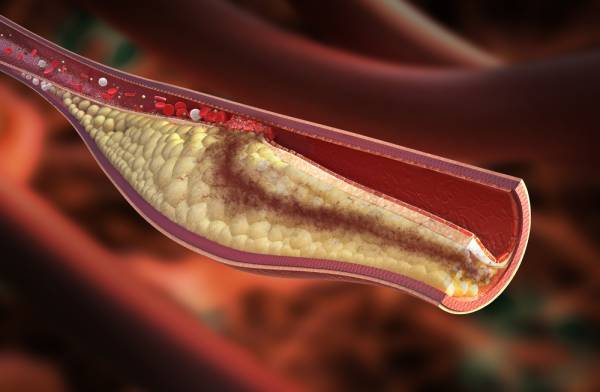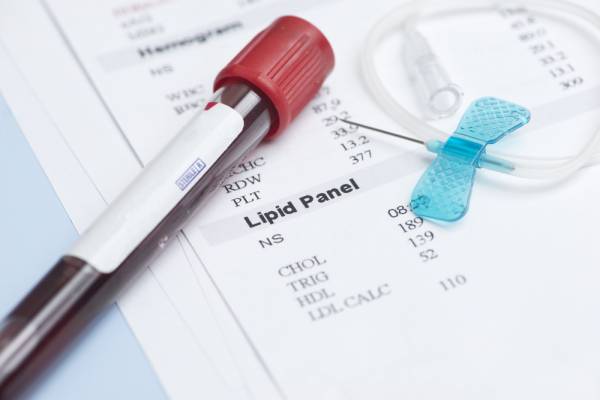If you are over the age of twenty, it’s a good idea to get a lipid profile (blood test) performed at your physician’s office. There is a lot of stuff floating throughout your circulatory system. You might as well discover what you have in there.
Breaking Down the Numbers
The lipid profile will include numbers on the following:
- Low-density lipoprotein cholesterol (LDL)
- High-density lipoprotein cholesterol (HDL)
- Triglycerides
- Total cholesterol
Your LDL cholesterol is the “bad.” HDL is the “good.” Triglycerides are fat obtained from dietary intake. Total cholesterol is those two combined, plus other lipid components.
Why are the levels of these important? Being a reader of this website, you’re most likely a healthy and fit specimen. But you might have a family history of heart disease, high blood pressure, diabetes, or some other issue. So, you need to watch your numbers on a regular basis. As they say, it’s better to be safe than sorry.
“If you have a family history of high LDL and exercise and diet are not helping, then cholesterol medications may be the answer.“
The risk of heart disease increases if your levels of LDL cholesterol are high. LDL can build up on the walls of your arteries and blood vessels in the form of plaque and decrease potential blood flow. HDL – the good cholesterol – can help decrease this bad cholesterol buildup.
Triglycerides are another type of circulating fat that can lead to narrowing of the arteries and vessels. Over-consuming calories can lead to greater amounts of triglycerides. As with LDL cholesterol, high triglyceride levels increase the risk of having a coronary event.

Low-density lipoproteins can form the arterial plaque that is generally associated with cholesterol.
What Does Healthy Look Like?
When it comes to LDL levels, the lower the better:
- Less than 100 mg/dl (milligrams per deciliter) = optimal
- 101-129 mg/dl = near optimal
- 130-159 mg/dl = borderline high risk
- 160-189 mg/dl = high risk
- More than 190 mg/dl = very high risk
But when it comes to HDL levels, the higher the better. You have a greater risk of heart disease if you are:
- A male and have less than 40 mg/dl of HDL
- A female and have less than 50 mg/dl of HDL
- Male or female, you have a lesser chance of heart disease with HDL levels more than 60mg/dl
“[Y]ou might have a family history of heart disease, high blood pressure, diabetes, or some other issue. So, you need to watch your numbers on a regular basis.”
Here’s where you should aim when it comes to triglycerides:
- Less than 150 mg/dl = normal
- 151 – 199 mg/dl = borderline high
- 200 – 499mg/dl = high
- More than 500 mg/dl = very high
Your total cholesterol is the sum of your HDL, LDL, and triglyceride levels. Determine your triglyceride sum factor by multiplying it by .2. That is, if your triglyceride level is 135, the sum factor would be 27 (135 x .2).
- Less than 200 mg/dl = optimal
- 201 – 239 mg/dl = borderline high-risk
- More than 240 mg/dl = high risk

Example – Female:
- LDL = 116 – near optimal
- HDL = 68 – good
- Triglycerides = 36 (180 level x .2) – borderline high
- Total cholesterol = 220 – borderline high-risk
Example – Male:
- LDL = 158 – border-line high risk
- HDL = 60 – good
- Triglycerides = 19.6 (98 level x .2) – normal
- Total cholesterol = 237.6 – borderline high-risk
How to Get Your Numbers in the Healthy Range
If you are already an avid trainee who eats well, but you have undesirable cholesterol levels, then you should seek out a reputable physician for help. If you have a family history of high LDL and exercise and diet are not helping, then cholesterol medications may be the answer.
If you don’t exercise and you do practice a poor diet, you need to:
- Begin a sensible exercise regimen.
- Shore up your food consumption habits.
- Get tested again when you’ve improved your lifestyle.
Check out these related articles:
- Is the Government Reversing Its Stance On Cholesterol?
- What Is Healthy Eating? Turning the Pyramid Upside Down
- Study – High Protein Diets Result In Better Cholesterol Scores
- What’s New On Pulse Beat Fit Today?
References:
1. Fogoros, Richard N., M.D., “Cholesterol and Triglycerides – What You Need to Know,” About Health, accessed April 2, 2015.
2. Kahn, April, “High Blood Cholesterol and Triglycerides (Lipid Disorder),” Healthline, accessed April 1, 2015.
3. Shaw, Gina, “The Trouble with Triglycerides – Manage high triglycerides with tips from the pros,” WebMD Feature, accessed April 1, 2015.
Photos courtesy of Shutterstock.






